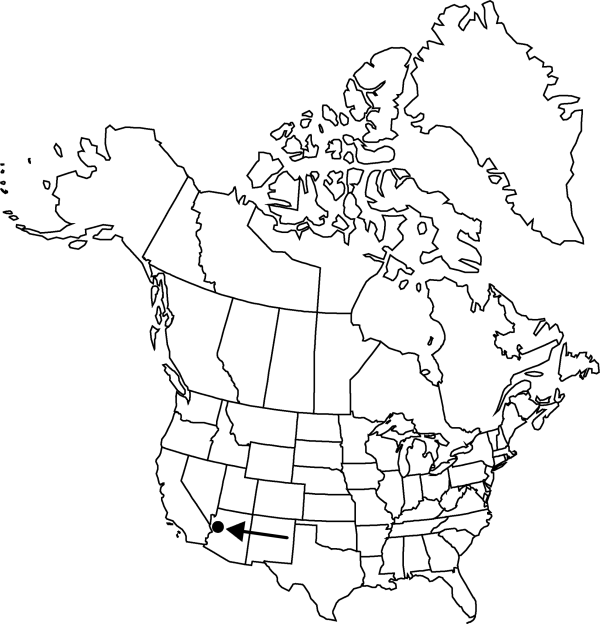Cylindropuntia abyssi
Cactaceae 1: 184. 1958.
Trees and shrubs, openly branched, to 1 m. Stem segments somewhat detachable, 8–14 × 1.8–2.5 cm; tubercles prominent, 0.6–1.5 cm, moderately broad; areoles elliptic, 5–7 × 2.5–3.5 mm; wool white to gray. Spines in brushlike clusters of 10–15 per areole, flexible, whitish to yellowish tan, aging gray; abaxial ones erect to descending, recurved, angularly flattened to flattened, sometimes twisted, the longest 23–38 mm; adaxial ones ascending, erect, divergent, terete to angularly flattened basally, the longest 18–32 mm; sheaths silvery white. Glochids in inconspicuous small adaxial tuft, pale yellow, 0.5–1.5 mm, few much longer and scattered along periphery of areole. Flowers: inner tepals pale yellow to greenish yellow, spatulate, 15–20 mm, apiculate; filaments yellow; anthers yellow; style off-white; stigma lobes yellowish. Fruits green becoming dull yellow, dry, tuberculate, spineless or with 1–2 short spines; tubercles subequal in length; umbilicus deep, 7 × 15–18 mm; areoles 16–24. Seeds tan, slightly angular and warped, 3–4 × 3.2–3.5 mm; girdle smooth. 2n = 22.
Phenology: Flowering spring–early summer (Mar–Jun).
Habitat: Desert scrub, limestone ledges and crests
Elevation: 500-800 m
Discussion
Cylindropuntia abyssi is tentatively viewed as a narrow endemic relict in Peach Springs Canyon, Mojave County, Arizona, but may well be a persistent hybrid derivative, most likely involving C. bigelovii.
Hybrids between Cylindropuntia abyssi and C. acanthocarpa have a shrub habit, long-divergent and loosely sheathed spines, and more elongate tubercles than C. abyssi.
Selected References
None.
